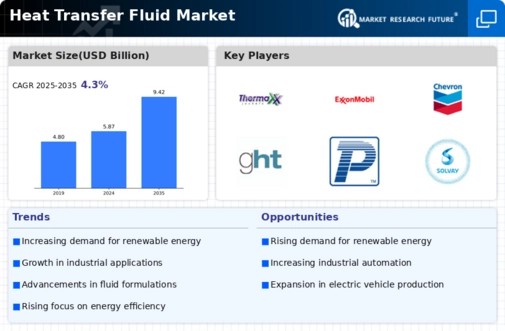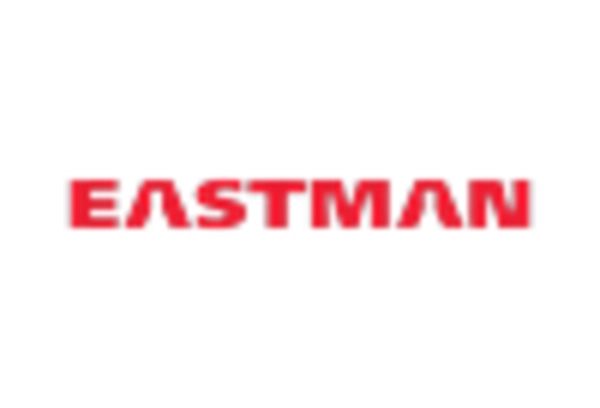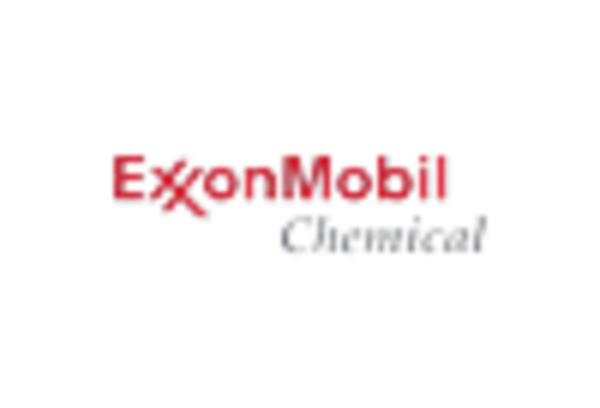Market Analysis
In-depth Analysis of Heat Transfer Fluid Market Industry Landscape
The market dynamics of the heat transfer fluid industry are influenced by a combination of factors that shape the supply and demand for these essential substances used in various industrial processes. One significant driver is the increasing demand for energy-efficient solutions in industries such as manufacturing, oil and gas, and renewable energy. Heat transfer fluids play a crucial role in maintaining optimal temperatures in processes like heat exchangers and solar thermal systems, contributing to overall energy efficiency. As industries globally emphasize sustainability and seek to reduce their environmental impact, the demand for heat transfer fluids with high thermal stability and low environmental impact has risen, pushing manufacturers to develop innovative and eco-friendly solutions.
Another pivotal factor in market dynamics is the rapid growth of renewable energy sources. Solar and geothermal energy systems rely on heat transfer fluids to capture and transfer thermal energy efficiently. The expansion of these renewable energy sectors, driven by environmental concerns and the quest for cleaner energy alternatives, directly impacts the heat transfer fluid market. Manufacturers in this space must adapt to the specific requirements of renewable energy applications, such as high-temperature stability and resistance to degradation, to capitalize on these emerging opportunities.
The petrochemical and manufacturing industries also significantly contribute to the dynamics of the heat transfer fluid market. These sectors use heat transfer fluids in processes like heating, cooling, and temperature control during manufacturing. Economic growth, industrialization, and expansion of these sectors drive the demand for heat transfer fluids. Additionally, as these industries continually seek to optimize their operations for cost efficiency, the choice of heat transfer fluids becomes a critical factor. Manufacturers must align their product offerings with the evolving needs of these industries, including considerations for thermal stability, corrosion resistance, and compatibility with diverse materials.
Technological advancements play a crucial role in shaping market dynamics. Ongoing research and development efforts focus on improving the performance and environmental sustainability of heat transfer fluids. The introduction of new formulations with enhanced heat transfer capabilities and longer fluid life cycles contributes to market competitiveness. Furthermore, innovations in nanotechnology have led to the development of nanofluids, which exhibit superior thermal conductivity. The adoption of such advanced fluids is gradually reshaping the landscape of the heat transfer fluid market.
Regulatory standards and environmental policies also influence market dynamics. Stringent regulations regarding emissions and environmental impact drive manufacturers to develop heat transfer fluids that comply with these standards. Additionally, safety and health considerations, as outlined by regulatory bodies, impact the choice of heat transfer fluids in industrial processes. Adherence to these regulations is not only a legal requirement but also a market differentiator for manufacturers aiming to establish credibility and trust among customers.
Market dynamics are further influenced by the global economic landscape. Economic downturns can lead to reduced industrial activities and, subsequently, a decline in the demand for heat transfer fluids. Conversely, periods of economic growth, particularly in emerging markets, create opportunities for market expansion. The global nature of the heat transfer fluid market necessitates manufacturers to monitor and adapt to economic fluctuations across different regions.
The competitive landscape also plays a vital role in shaping market dynamics. The presence of established players, new entrants, and regional competitors creates a dynamic environment. Strategic collaborations, mergers, and acquisitions are common strategies employed by companies to strengthen their market positions, expand their product portfolios, and enhance their global reach. Customer relationships, technical support, and value-added services become crucial elements for manufacturers aiming to differentiate themselves in a competitive market.
the market dynamics of the heat transfer fluid industry are multifaceted, driven by the increasing demand for energy-efficient solutions, the growth of renewable energy sectors, the influence of petrochemical and manufacturing industries, technological advancements, regulatory standards, and the global economic landscape. As industries evolve and seek sustainable solutions, manufacturers in the heat transfer fluid market must stay agile, innovative, and responsive to these dynamic factors to capitalize on emerging opportunities and maintain a competitive edge.

















Leave a Comment